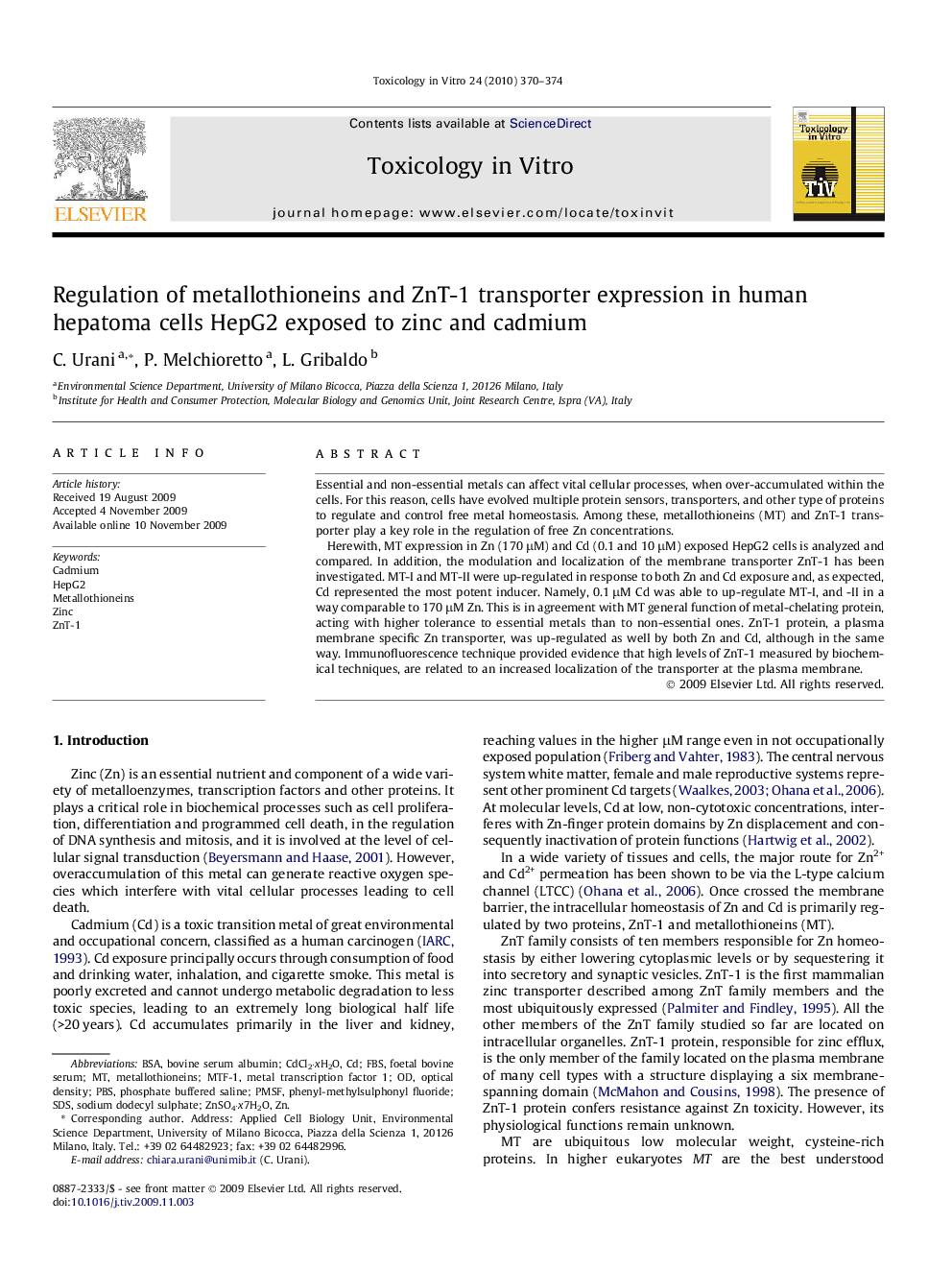| Article ID | Journal | Published Year | Pages | File Type |
|---|---|---|---|---|
| 2603324 | Toxicology in Vitro | 2010 | 5 Pages |
Essential and non-essential metals can affect vital cellular processes, when over-accumulated within the cells. For this reason, cells have evolved multiple protein sensors, transporters, and other type of proteins to regulate and control free metal homeostasis. Among these, metallothioneins (MT) and ZnT-1 transporter play a key role in the regulation of free Zn concentrations.Herewith, MT expression in Zn (170 μM) and Cd (0.1 and 10 μM) exposed HepG2 cells is analyzed and compared. In addition, the modulation and localization of the membrane transporter ZnT-1 has been investigated. MT-I and MT-II were up-regulated in response to both Zn and Cd exposure and, as expected, Cd represented the most potent inducer. Namely, 0.1 μM Cd was able to up-regulate MT-I, and -II in a way comparable to 170 μM Zn. This is in agreement with MT general function of metal-chelating protein, acting with higher tolerance to essential metals than to non-essential ones. ZnT-1 protein, a plasma membrane specific Zn transporter, was up-regulated as well by both Zn and Cd, although in the same way. Immunofluorescence technique provided evidence that high levels of ZnT-1 measured by biochemical techniques, are related to an increased localization of the transporter at the plasma membrane.
